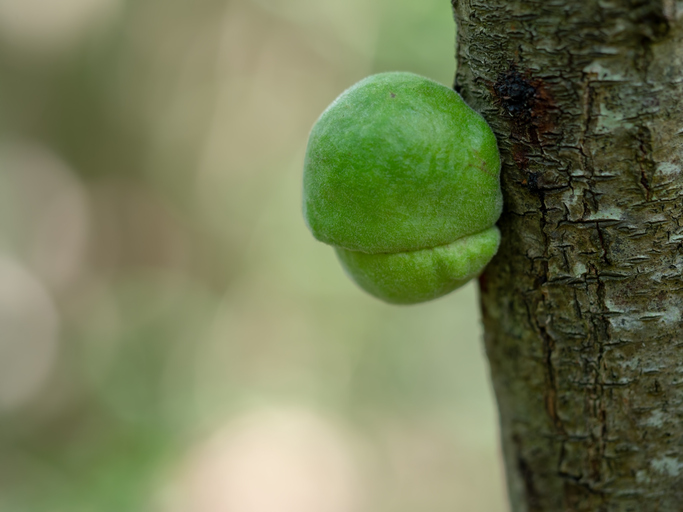gall
(noun, verb)
/gɔl/
 LISTEN
LISTEN


Oak trees often get galls.
Gall is a word with multiple meanings. As a noun, gall is another word for bile, a bitter yellow or greenish liquid produced by the liver, that aids in digestion of fats. Informally, it means ‘nerve,’ as in rude boldness. As a verb, to gall means ‘to make sore by rubbing,’ especially if we are talking about animals, and, figuratively, ‘to annoy greatly.’ The related noun gall is a sore on the skin made by rubbing, especially on horses. Something very irritating is also a gall.
Example sentences
- The laboratory tested samples of gall from the cattle.
- Larry asked if you'd pay for his vacation? The gall of the man!
- The horse's harness is galling him.
- What really galls me is that my colleague expects me to do most of her work as well as my own.
- The horse had a gall on her back.
- His children's ingratitude was a gall to the old man.
Words often used with gall
gall and wormwood: bitterness, resentment. Example: “Paul felt gall and wormwood when his colleague got the promotion he wanted.”
In pop culture
The Holly and the Ivy is a traditional Christmas Carol. You can hear it being sung here by the Mediaeval Baebes. Listen out for the lyric “The holly bears a bark as bitter as any gall.”
Additional information
As a noun, gall is also an abnormal growth on a plant or tree.
Did you know?
Gall meaning bile is now mainly used when we are talking about animals. For humans, it is now only really used in compounds like gall bladder, which is a pouch or sac attached to the liver where bile is stored, or gallstones, which are hard masses that form in the gall bladder.
Commonly confused with
Don’t confuse gall with gal. Gal is an old-fashioned, informal way of saying “girl.”
Origin
Gall, meaning ‘bile,’ dates back to before the year 900, in the form of the Old English noun galla or gealla (Middle English galle). It can be traced back to the Proto-Germanic gallon (bile) and the proto-Indo-European root ghel– (to shine), and is related to the Old Norse gall (gall or bile,’ and ‘sour drink’), the Old Saxon galle, the Old High German galla and the German Galle (all meaning ‘bile’), as well as the Sanskrit harih (yellow) and hiranyam (gold), the Avestan zari (yellow), the Old Persian daraniya– and Avestan zaranya– (gold), the Greek khloros (greenish-yellow color) and kholos (‘bile or gall’ or ‘wrath’), the Latin helvus (yellowish), the Lithuanian geltonas (yellow), the Old Church Slavonic zlutu, Polish żółty and Russian zeltyj (yellow), the Latin galbus (greenish-yellow) and fellis (bile or gall), the Lithuanian žalias (green), želvas (greenish) and tulžis (bile), the Old Church Slavonic zelenu, Polish zielony and Russian zelenyj (green), the Old Irish glass and Welsh and Breton glas (green), the German gelb and the Old Norse gulr (yellow), the Old Church Slavonic zlato, Russian zoloto and Gothic gulþ (gold), as well as many English words, including arsenic, chloral, chrotic, chlorine, chloroform, chlorophyll, cholera, cholesterol, gild, glad, glance, glare, glass, glaze, gleam, glee, glib, glide, glimmer, glimpse, glint, glisten, glitch, glitter, gloat, gloss, glow, glower, gold, jaundice, melancholy and yellow. The figurative sense ‘rancor or embittered spirit’ dates back to around the year 1200, but the more common figurative sense today, ‘boldness or impudence’ was first used in the late 19th century in the US. The sense ‘sore on the skin caused by chafing’ also dates back to before the year 900, as the Old English gaella, and comes from the same origin described above. Gall, meaning ‘a lump on a plant caused by insect egg deposits,’ dates back to the late 14th century, and can be traced back to the Latin galla (oak-gall), from the same root as the other meanings.The verb gall, meaning ‘to make sore by chafing,’ dates back to the mid-14th century, and comes from the related noun sense.
Word of the Day is released Monday through Friday.



